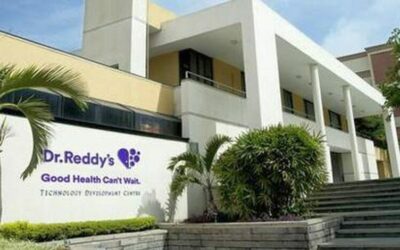DELHI, INDIA—Nov. 22, 2022—Amazon Web Services, Inc. (AWS), an Amazon.com, Inc. company, today announced the launch of its second AWS infrastructure Region in India—the AWS Asia Pacific (Hyderabad) Region. The region caters to developers, startups, entrepreneurs, and enterprises, as well as government, education, and nonprofit organizations.
“The launch of the AWS Asia Pacific (Hyderabad) Region supports India’s digital transformation and is part of our long-term investment in the country since opening our first office in 2011. Customers and partners in India will now have additional regional infrastructure to deploy applications with greater resilience, availability, and even lower latency,” said Prasad Kalyanaraman, vice president of Infrastructure Services at Amazon Data Services Inc.
With the launch of the AWS Asia Pacific (Hyderabad) Region, AWS now has 96 Availability Zones across 30 geographic regions, with announced plans to launch 15 more Availability Zones and five more AWS Regions in Australia, Canada, Israel, New Zealand, and Thailand.
AWS announced the launch of the second region in November 2020.
See also: AWS to Launch a Second Region in India to Support Infrastructure Expansion
What are Availability Zones and Regions?
An AWS Region is a collection of AWS resources in a geographic area. Each AWS Region is isolated and independent of the other Regions. Regions provide fault tolerance, stability, and resilience, and can also reduce latency. They enable you to create redundant resources that remain available and unaffected by a Regional outage.
AWS Regions are composed of Availability Zones that place infrastructure in separate and distinct geographic locations.
The AWS Asia Pacific (Hyderabad) Region consists of three Availability Zones and joins the existing AWS Asia Pacific (Mumbai) Region, which opened in June 2016.
An Availability Zone is a distinct location within a Region that’s insulated from failures in other Availability Zones, and provides inexpensive, low-latency network connectivity to other Availability Zones in the same Region.
See also: AWS Regions and Availability Zones
Availability Zones are located far enough from each other to support customers’ business continuity, and near enough to provide low latency for high availability applications that use multiple Availability Zones.
Each Availability Zone has independent power, cooling, and physical security and is connected through redundant, ultra-low latency networks.
AWS customers focused on high availability can design their applications to run in multiple Availability Zones to achieve even greater fault tolerance. The launch of the AWS Asia Pacific (Hyderabad) Region will enable local customers with data residency preferences to store data securely in India, while providing customers with even lower latency across the country.
India Investment and Roadmap
AWS is planning to invest an estimated $4.4 billion (approx. INR 36,300 crores) in India by 2030 through the new AWS Asia Pacific (Hyderabad) Region, which includes capital expenditures on the construction of data centers, operational expenses related to ongoing utilities and facility costs, and purchases of goods and services from regional businesses.
The investment is also estimated to support an average of more than 48,000 full-time jobs annually at external businesses during this time. These jobs will be part of the AWS supply chain in India, including construction, facility maintenance, engineering, telecommunications, and jobs within the country’s broader economy. The construction and operation of the AWS Asia Pacific (Hyderabad) Region is also estimated to add approximately $7.6 billion (approx. INR 63,600 crores) to India’s gross domestic product by 2030.
“As a part of Prime Minister Narendra Modi’s $1 Trillion Digital Economy vision, the ‘India cloud’ is set for big expansion and innovation. Data centres are an important element of the digital ecosystem. The investments by AWS in expanding their data centres in India is a welcome development and would certainly help catalyze India’s digital economy,” said Rajeev Chandrashekhar, Union Minister of State for Electronics and Information Technology and for Skill Development and Entrepreneurship. “The Government of India’s upcoming National Cloud and Data Centre Policy envisages a significant increase in India’s capacity from the current 565 MW to over 2565 MW in the near future. We look forward to greener and more sustainable data centres to power India’s expanding economy.”
For more information about AWS Global Infrastructure, visit aws.amazon.com/about-aws/global-infrastructure.









